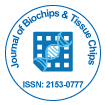Research Article
Thickness limitation and cell viability of multi-layered cell sheets and overcoming the diffusion limit by a porous-membrane culture insert
| Waki Sekine1 Yuji Haraguchi2 Tatsuya Shimizu3 Akihiro Umezawa4 and Teruo Okano5* | |
| 1Institute of Advanced Biomedical Engineering and Science, TWIns, Tokyo Women’s Medical University, Tokyo, Japan | |
| 2Department of Reproductive Biology and Pathology, National Research Institute for Child Health and Development, Tokyo, Japan | |
| Corresponding Author : | Dr. Teruo Okano Institute of Advanced Biomedical Engineering and Science TWIns Tokyo Women’s Medical University 8-1 Kawada- Cho, Shinjuku-ku Tokyo 162-8666, Japan E-mail: tokano@abmes.twmu.ac.jp |
| Received August 30, 2011; Accepted October 14, 2011; Published October 29, 2011 | |
| Citation: Sekine W, Haraguchi Y, Shimizu T, Umezawa A, Okano T (2011) Thickness limitation and cell viability of multi-layered cell sheets and overcoming the diffusion limit by a porous-membrane culture insert. J Biochip Tissue chip S1:007. doi:10.4172/2153-0777.S2-001 | |
| Copyright: © 2011 Sekine W, et al. This is an open-access article distributed under the terms of the Creative Commons Attribution License, which permits unrestricted use, distribution, and reproduction in any medium, provided the original author and source are credited. | |
Abstract
A major challenge of tissue engineering is the creation of three-dimensional (3D) and functional tissues. However, the tissue ischemic environments make the production of thicker 3D tissues difficult. For evaluating the thickness limitation of tissue, the cell viability and metabolism of a novel in vitro 3D tissue model, which is composed of multi- layered cell sheets, were investigated. Human endometrial-derived mesenchymal cells (EMC) were cultured on temperature-responsive culture dishes. Confluently cultured EMCs were harvested as an intact contiguous cell sheet only by lowering temperature. The obtained cell sheets were successfully layered into 3D cell-dense tissues and cultured in vitro for 7 days. Glucose consumption and lactate production in the culture media increased in accordance with the number of layers (single to triple). Histological analyses and cell viability assays showed that viable tissues were found in single- to triple-layered cell sheets and damaged tissues in over quadruple layers. The results concluded that the thickness limitation of layered cell sheets was approximately 40 mm, which was the thickness of triple-layered cell sheets. Importantly, when multi-layered cell sheets were cultured on porous membranes, the adhesion among cell sheets and cell viability were improved, resulting in successful fabricating thicker tissues (~100 mm) than that on normal culture dishes. The metabolic analyses showed that multi-layered cell sheets rely on their anaerobic metabolism, indicating that supplying nutrients rather than oxygen through both upper and bottom tissue surfaces improved the cell viability in 3D tissues.

 Spanish
Spanish  Chinese
Chinese  Russian
Russian  German
German  French
French  Japanese
Japanese  Portuguese
Portuguese  Hindi
Hindi